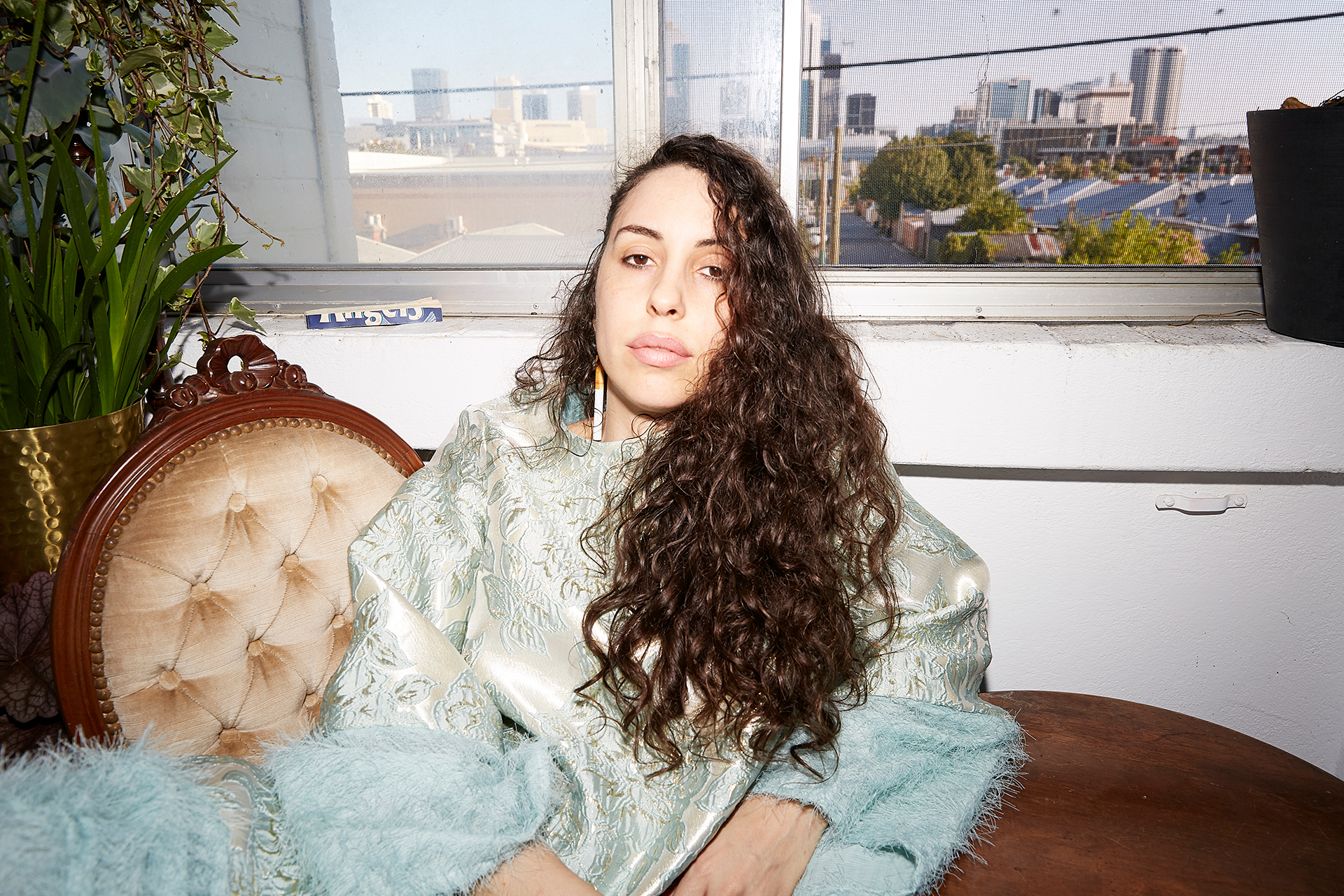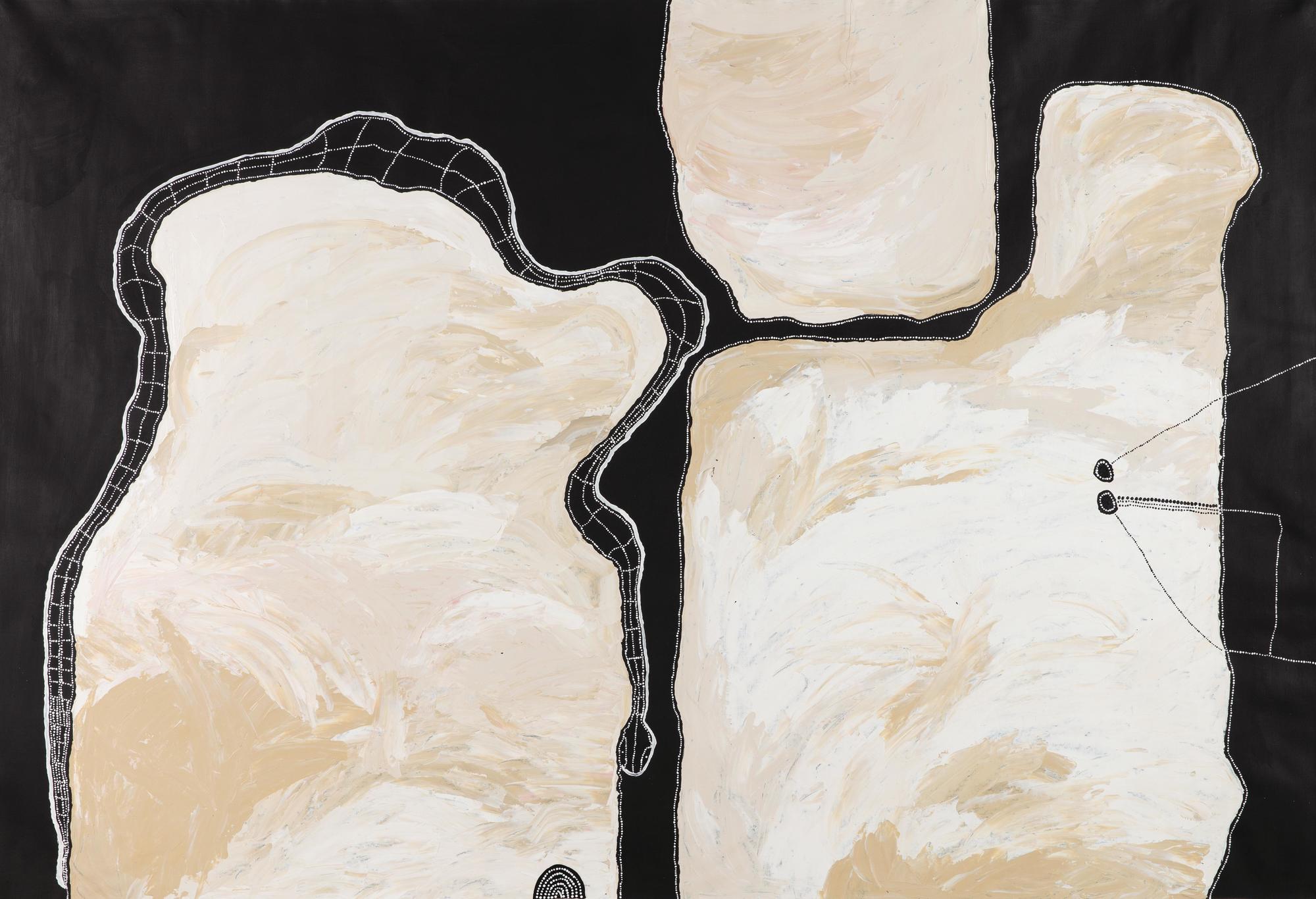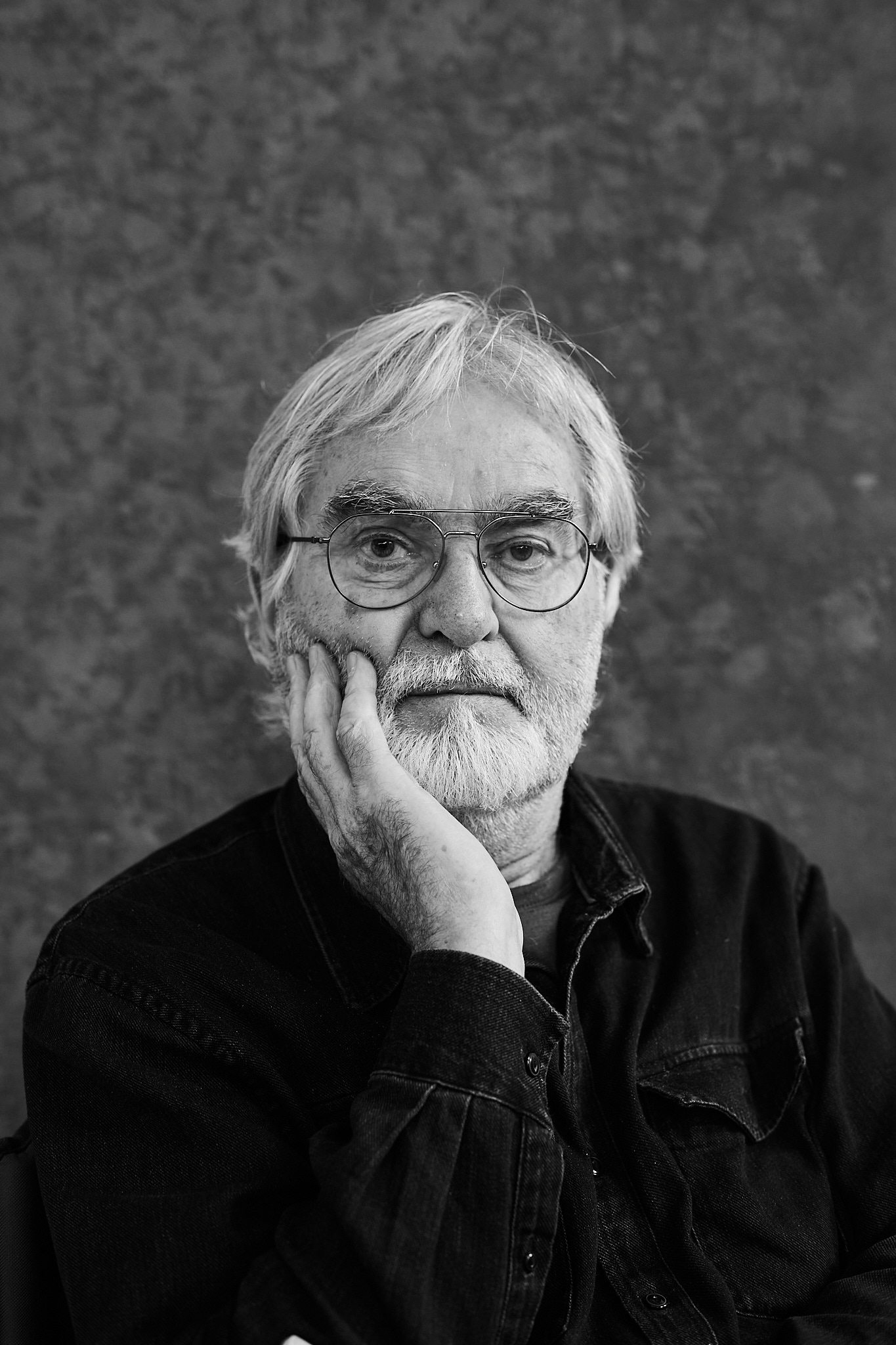In AGWA’s screen space, a 10-year survey of Erin Coates’ diverse filmic work
From body horror and zombies to parkour, climbing and deeep-sea diving, Coates’ filmic explorations reveal the strange, the horrific and the all-too-familiar.
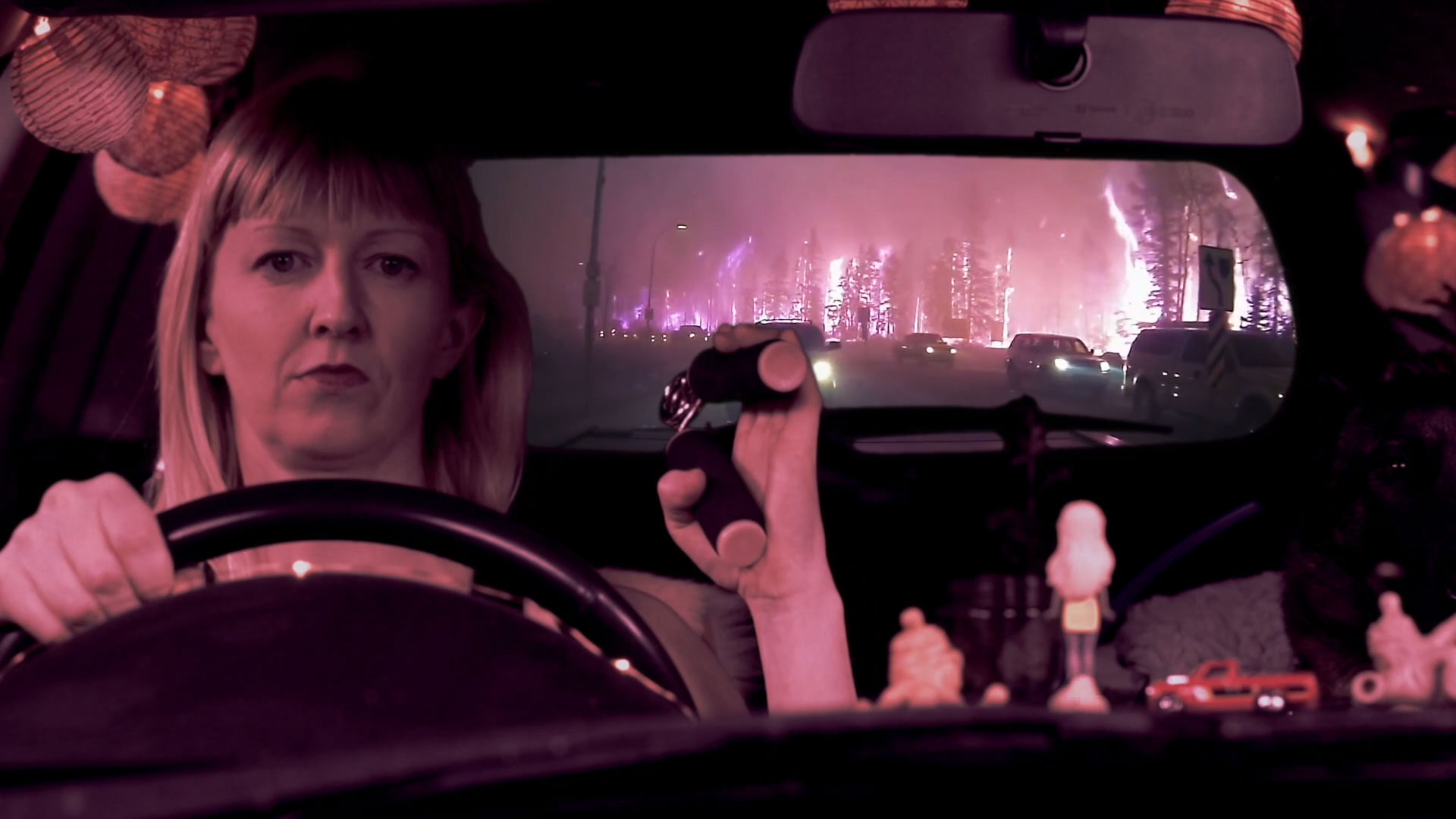
Erin Coates Driving to the Ends of the Earth 2016. Video with sound, duration: 11:22 minutes. Composer: Stuart James. Camera: Sohan Ariel Hayes. Gaffer: Dion Borrett. Set Assistant: Shevaun Cooley. On loan from Erin Coates.
THE TALENTS OF Erin Coates are multiple and expressed in the most strange and compelling ways. This might mean crafting monstrosities out of silicon for underwater scenarios, drilling into oyster shells for musical installations, or focusing intently on the most detailed graphite drawings, or the ancient art of scrimshaw on whale teeth. Over many years, her work has grown seemingly no-end, as visible in the 10-year span of filmic works showcased in AGWA’s The View From Here exhibition.
Exploring the limits of the human body, Coates’ films urge the viewer look twice and to think through multiple ideas. They each have an improbable quality about them—they play with the surreal and push the imagination. At the same time, they also bring you down to everyday realities and ask you to take in the familiar world around you anew. When in Merge (2013), a sedan is overcome by the safety airbags, it recalls the numerous times airbags have been more of a suffocating hindrance than a saviour. When airbags become the stuff of horror, the familiar everyday is made strange.
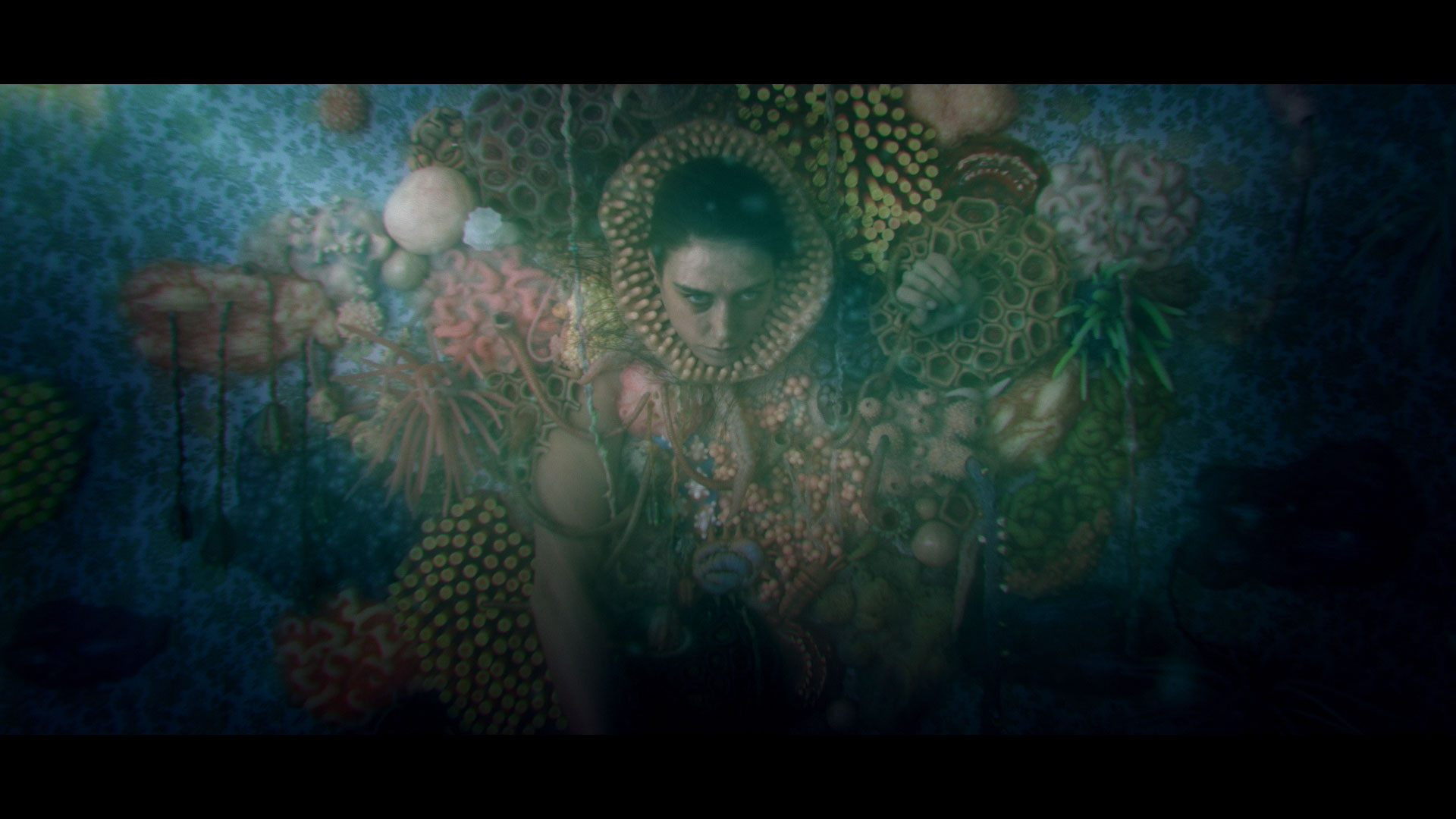
Erin Coates and Anna Nazzari Dark Water 2019 (still). Video with sound, duration: 15 minutes. Written, directed and produced by Erin Coates and Anna Nazzari. Director of Photography: Dion Borrett. Actors: Alexandra Nell, Zachary Drieberg. Sound Editor: Glenn Martin. Composer: Cat Hope. Editor: Merlin Eden. Underwater Camera: Jasper Silver. Sound Recordist: Alex Blocher. Set Dresser: Michelle Becker. Set Builders: Neil Aldum, Erin Coates, John Coates. Post Facility: Siamese. Graphic Designer: Loren Holmes. Casting: Annie Murtagh-Monks. Musicians: Decibel. On loan from Erin Coates.
This element of horror permeates Coates’ films. At times it is a style of body horror akin to that of genre pioneer David Cronenberg, with oozing, fleshy and unlikely bodies. At other times there is reference to zombie, science fiction and classic outback Australiana films.
She also references horrific moments from literature and maritime history. In Open Water: The Offering (2017), the gruesome severed leg of Albany whaler Chess Stubs is the protagonist of an underwater narrative. Its bloated form floats in the ocean as an abject offering that becomes an ecosystem, in exchange for the catch of whale bodies. “It’s a darkly surreal work,” Coates acknowledges.
Body parts and bodies of all shapes and states feature widely, with themes of female empowerment and physical strength threaded throughout. In The Pact (2017), Coates and her longtime collaborator and fellow climber, Shevaun Cooley, writhe together in a tight space. The pair engage in a show of muscular might as muscles flex and strain while undergoing various climbing manoeuvres. It is a pact because they need each other. It is about relationships and how we are interdependent, needing and giving support in turn.
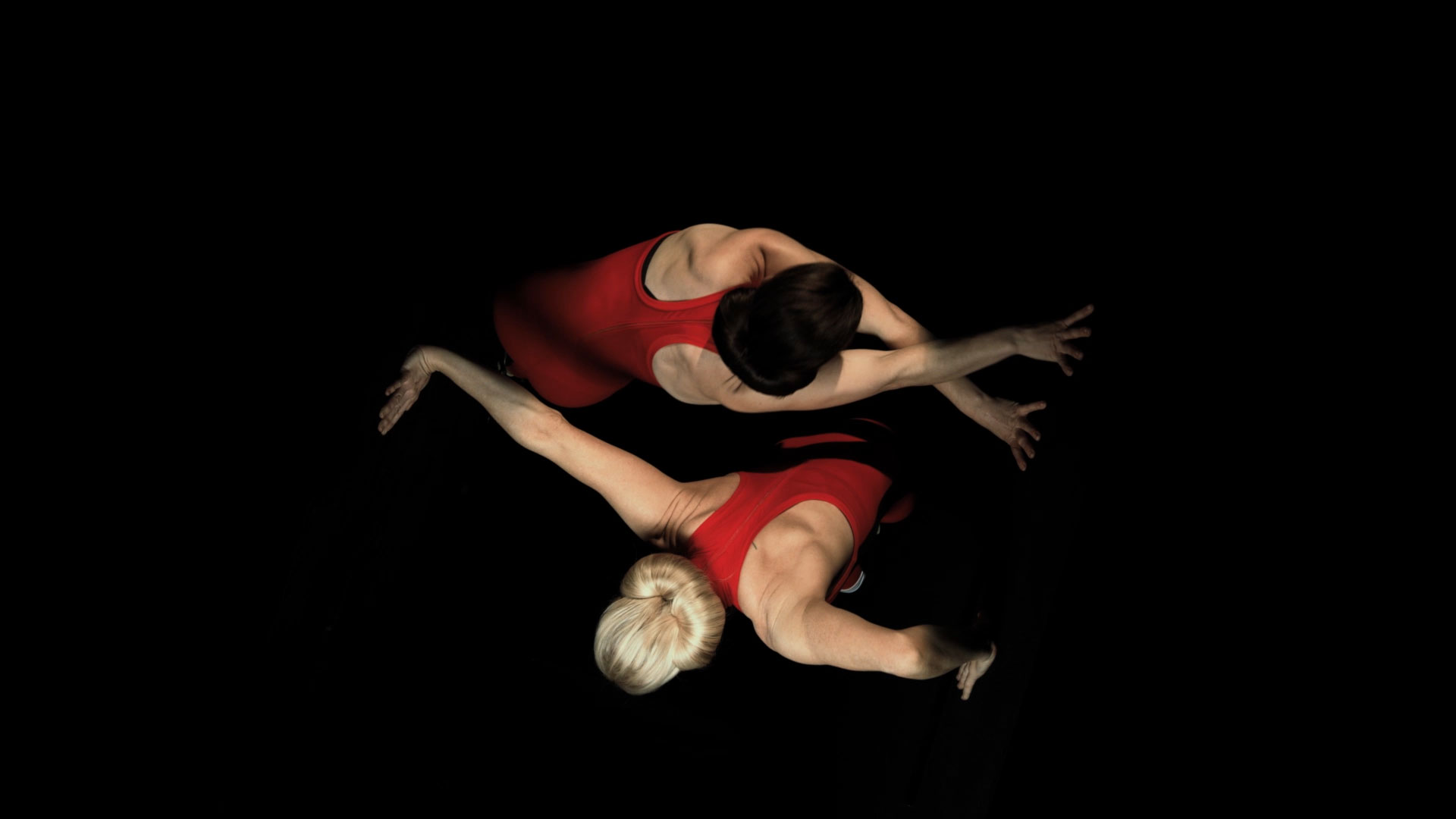
Erin Coates The Pact 2017 (still). Video with sound, 7:20 minutes. Climbers: Erin Coates and Shevaun Cooley. Sound Composition: Cat Hope and Decibel. Editor: Erin Coates. Camera and Colourist: Sohan Ariel Hayes. Gaffer: Dion Borrett. Hairstylist: Jenny Reardon. Costumes: Angela Ferolla. Purchased through the Art Gallery of Western Australia Foundation: Emerging Artists’ Fund.
Coates’ films also engage in broader cultural critiques. In Thirst (2012), a pack of zombies stumble through an abandoned petrol station. This speaks to our illogical dependence on fossil fuels and car culture, to our own detriment. In Driving to the Ends of the Earth (2016), then, Coates’ car becomes a life-support dwelling as she and her dog drive through numerous disaster scenarios of collated dash-cam footage. Coates’ humour and wry sensibility are apparent here; as boulders, mudslides, floods, fires and plane crashes obscure the view, she nonchalantly brushes her teeth and applies makeup.
“You can see my fascination with bodily thresholds resurfacing again and again,” Coates says, reflecting on her body of work. Ultimately, her work comes back to the point of bodies as vessels through which to communicate specific meanings about being in the world today, in relation to our history, environment, and psychology. Her films are mirrors, at once non-judgmental reflections of our shared existence and timely warnings about its undoing.
This article was first published in the print publication The View From Here in October 2021 under the title Bodily Thresholds.
